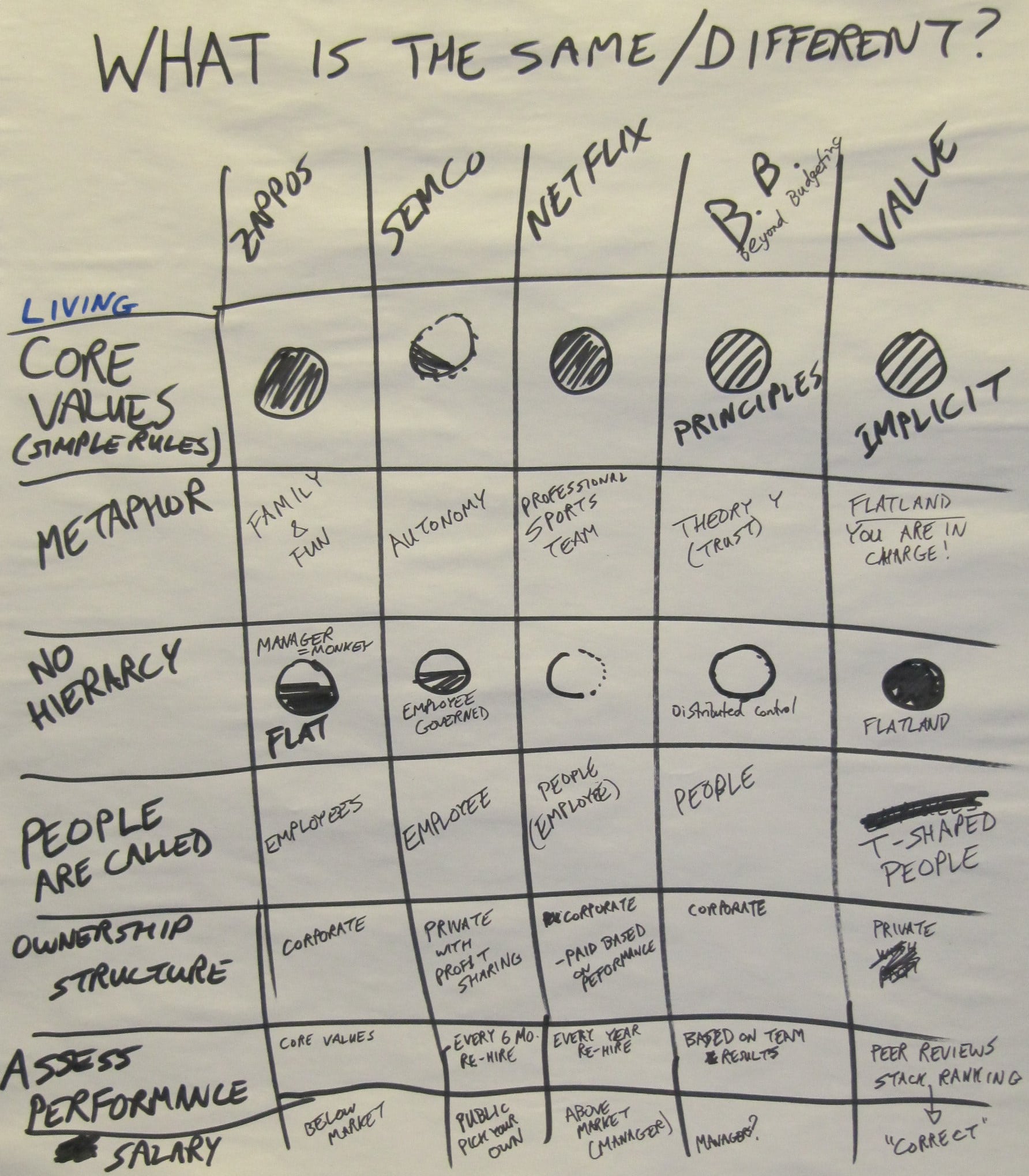There is no single path or prescription for high-performance organizational culture. Increasingly companies are abandoning the traditional “modern management” practices developed for manufacturing and are moving to post-modern approaches that reflect the changing face of work and the needs of knowledge workers.
In this post, we compare and contrast five organizations that have moved beyond traditional (archaic) management practices: Zappos, Valve Corporation, Semco, Netflix, and Beyond Budgeting Companies. The results are shown in the matrix below using Harvey Balls:
As can be seen that for many aspects these organizations, there is no single best way. It can be seen that there are many paths to effective organizational cultures. At the level of individual practices we can see that there is great diversity.
Customer Focus and Engaged Staff
There are two very powerful common threads that emerge around these organizations: customer focus and engaged staff. Although each organization has a unique cultural operating system and supporting practices, they all share this commonality.
Organizational Coherence
Each organization has a powerful driver for coherence around values and behaviour. We consider each of the methods identified in the image below to be roughly equivalent in the sense that perform the same function – namely organizational coherence. In other words, simple rules of behaviour in one organization may be functionally equivalent to values in another organization in terms of it’s ability to guide and unify. Each organization has different values and principles, so this would suggest that there is no one path to success.
Future Investigation
The diagram below is a brainstorm of additional organizational aspects to consider as well as other organizations the have characteristics of post-modern thinking.
I have recently discovered that Lululemon is another example of break-through organizational culture.
Acknowledgements
I would like to thank the participants in this session: Don Gray, Claudia Melo, Jens Coldewey and Diana Larsen. I would also like to acknowledge the financial contribution of the Agile Alliance for sponsoring this workshop through the Supporting Agile Adoption Program.





